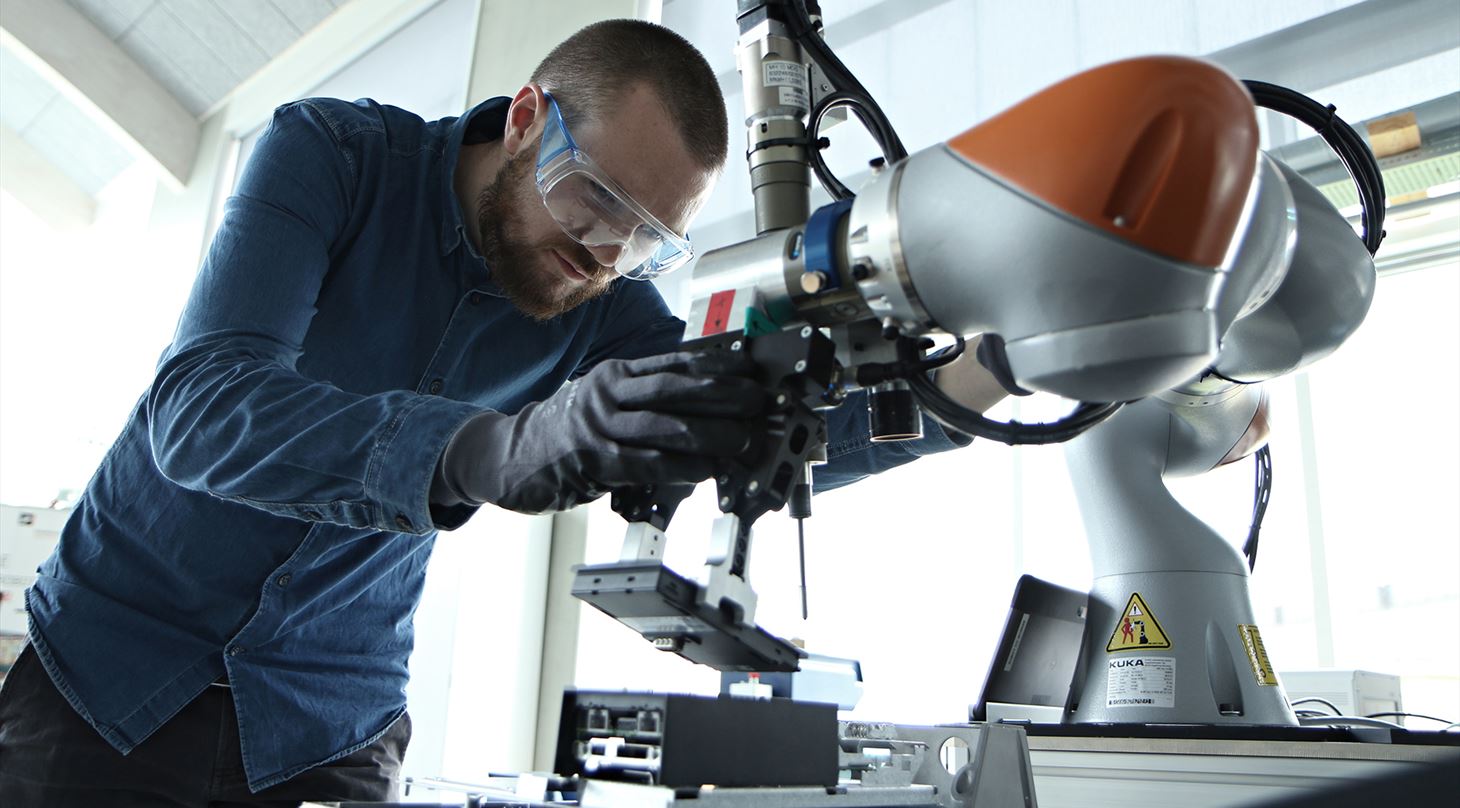As automation continues to drive changes in the production industry, collaborative robots (or cobots) are becoming increasingly popular. After all, what could be better than having a robot that works hand-in-hand with human employees? Not only can these bots take over tedious and physically demanding tasks that would otherwise need to be done by human labor, but they can also work safely alongside humans for greater efficiency in various services.
But when it comes to cobots, what types are available on the market today? In this article, we’ll dive into everything you need to know about different types of collaborative robots and how they can optimize your operations.
Table of Contents
Definition Of A Collaborative Robot
A collaborative robot, also known as a cobot, is designed to work alongside humans to support them in completing tasks more efficiently. The goal of the cobot is to interact with the human and help them complete the task without interfering with their workflow.
Cobots are often used in industries such as manufacturing, where they reduce risk, deliver higher speed and accuracy, and allow 24/7 operation. As a result of their usefulness, cobots have become increasingly popular over recent years and have transformed many industries for the better.
Types Of Collaborative Robots
There are numerous types of collaborative robots available on the market today. These include:
Mobile Robots: Mobile robots are designed to navigate their environment autonomously and interact with their surroundings. They can be used for navigation, delivery, and inspection tasks in many industries, such as healthcare, retail, and manufacturing.
Articulated Robots: Articulated robots are more precise than mobile robots, as they use joints and motors to control precise motion. These robots can be used in pick-and-place tasks, welding applications, 3D printing applications, and much more.
SCARA Robots: SCARA stands for Selective Compliance Assembly Robot Arm. These robots are generally used for assembly tasks and have four axes of motion that are programmed to do specific jobs repetitively.
Delta Robots: Delta robots, also known as Parallel Manipulators, use three arms to provide maximum agility and reach for intricate tasks such as picking and packing items, packaging products, and performing machine vision inspections.
Cartesian Robots: Cartesian robots are linear motion systems that use three axes of motion to carry out tasks such as soldering, machining, and printing. They are generally used in industries where precision and accuracy are critical.
Grippers: Gripper robots are designed to grasp objects using robotic arms equipped with specialized gripping tools. These robots can be used in various applications, such as packaging and assembly.
The right type of cobot will depend on the specific task that needs to be completed. Therefore, assessing your requirements is essential before selecting an appropriate robot for the job.
Advantages And Disadvantages Of Collaborative Robots
Collaborative robots come with many advantages and disadvantages. On the one hand, they can improve efficiency by freeing human labor for more complex tasks. Additionally, they are generally safer to use in shared spaces due to their sensor-embedded designs, which detect any potential obstruction and take appropriate action.
On the other hand, cobots can be expensive to purchase and maintain, so they are only suitable for some budgets. Additionally, they require a degree of knowledge and skill to operate effectively, so it is crucial to ensure your staff receives adequate training before using them.
Overall, collaborative robots have advantages and disadvantages that must be considered when deciding if they suit your operations. By taking the time to understand their benefits and drawbacks, you can make an informed decision about whether or not cobots will be the best solution for your business.
How Collaborative Robots Are Changing The Manufacturing Industry
Collaborative robots are revolutionizing how many industries, such as manufacturing and retail, operate. They are providing increased safety for workers by taking on tasks that can be dangerous or tedious for humans to carry out, such as walking in a factory environment.
Cobots can also help reduce costs by eliminating the need for human labor. By automating specific tasks, companies can reduce overhead costs associated with hiring and training workers. Additionally, collaborative robots are more reliable than humans due to their precise motion control methods and lack of fatigue, leading to increased production rates and improved product quality.
Finally, cobots can be easily integrated into existing systems as they are often designed to work with existing equipment. It can reduce the cost of installation, as well as minimize downtime during implementation.
The Future Of Collaborative Robotics
In the future, cobots may become even more advanced as further research and development lead to increased capabilities. For instance, advancements in artificial intelligence could enable collaborative robots to make decisions without needing direct human intervention, making them even more efficient and cost-effective.
As collaborative robotics technology advances, more industries will likely begin to adopt the technology for their operations. It could lead to more cobots being deployed in the workplace, reducing costs, and increasing safety while also improving efficiency. Ultimately, it is clear that collaborative robots have the potential to revolutionize the way businesses operate in a variety of sectors.

